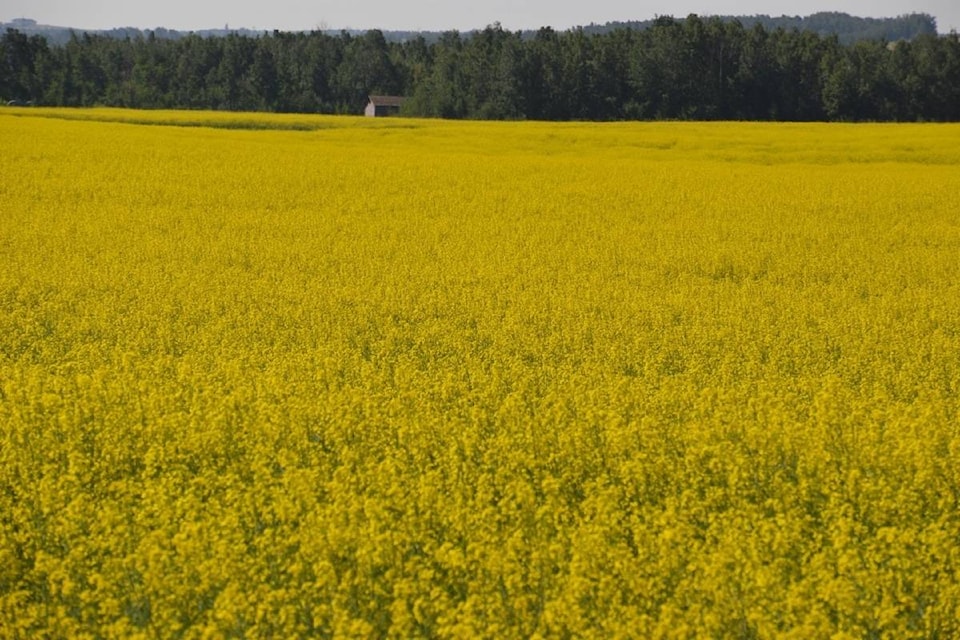Alberta producers are reporting large variations among buyers in their dockage assessment on canola.
“On dockage alone, producers have reported from one to over three percent differences in dockage on the same sample of their canola,” says Neil Blue, provincial crop market analyst, Alberta Agriculture and Forestry, Edmonton.
“These differences were reported both in cases of comparing one buyer to another and also in challenging a dockage assessment by using the services of the Canadian Grain Commission.”
If a producer is not satisfied with grade or dockage assessed by a buyer, they can request another assessment of the grade and dockage.
“If the delivery is to a primary elevator, a producer has the right to request that a sample of the load be sent to the Canadian Grain Commission for assessment. Payment for that load will then be subject to the result from the Canadian Grain Commission inspector.
“The result could be either favorable or unfavorable to the producer, so it’s important to be reasonably certain of your expected grade and dockage in advance of contracting and delivering to a buyer. This right to challenge the grading result only extends to delivery to a primary elevator, but other buyers will very likely try to please their customer also.”
The Canadian Grain Commission’s Grade Grading Guide, available on their website, describes the method, aspirator settings and screens to be considered for use in grading canola.
“The Canadian Grain Commission website, https://www.grainscanada.gc.ca/index-eng.htm, also contains the guidelines and forms to use if a producer is challenging the grade or dockage,” says Blue.
“If the producer pays for the assessment by the Commission, the fee is about $50 plus mailing costs. Producers are also welcome to contact the Canadian Grain Commission by phone. The closest regional offices are in Saskatoon and Calgary.”
For more information, contact the Ag-Info Centre at 310-FARM (3276). Blue also has a list of crop buyers that is available on request from 780-422-4053 or by e-mail at neil.blue@gov.ab.ca.
Canola grading
The unusually large amount of spring harvested canola this year has some producers concerned about grading when marketing their crop.
“There has been not only a large variation on the canola quality, particularly for spring-threshed canola, but there is also a large variation in the way buyers are perceiving that quality,” says Neil Blue, provincial crop market analyst, Alberta Agriculture and Forestry, Edmonton.
One of the determinants of canola quality is seed damage.
“Damage is assessed by observing the result of crushing canola seeds with a roller,” says Blue. “Producers are familiar with a common form of damage, that being distinctly green seeds. However, some canola seeds overwintered in the fields incurred damage in the form of inside seed colour change from a bright yellow to darker yellow to tan or brown color. Like the assessment of green seed count, the assessment of other damage is subjective, based on the judgment of the grader.”
This year, says Blue, in part due to the strong demand and relatively tight supply of canola, the outside appearance of the canola seed has had little influence on the grading. “Because of this, you should shop your samples around widely, preferably after obtaining a grade on a representative sample from an objective source, such as the Canadian Grain Commission.”
Most (but not all) buyers follow the Canadian Grain Commission grading standards. Those standards allow a maximum green count and maximum total damage level for each grade:
#1 canola can have a maximum of 2 per cent green count and 5 per cent total damage
#2 canola can have a maximum of 6 per cent green count and maximum of 12 per cent total damage
#3 canola can have maximum 20 per cent green and 25 per cent total damage
The Canadian Grain Commission supplies colour cards to use as reference in assessing both green count and other damage.
“Most buyers will have these grading standards in their facility’s grading room. Also, the entire grain grading guide is available on the Canadian Grain Commission website at www.grainscanada.gc.ca. The Canada Grain Commission can also provide grading of crop samples on request. As well, the Harvest Sample Program provides free grading of crop samples in the fall. This program is a great mechanism for producers to get a base grade for their crop sample to use in shopping their crop around to prospective buyers.”
For more information, contact the Ag-Info Centre at 310-FARM (3276). Blue also has a list of crop buyers that is available on request from 780-422-4053 or by e-mail at neil.blue@gov.ab.ca.
